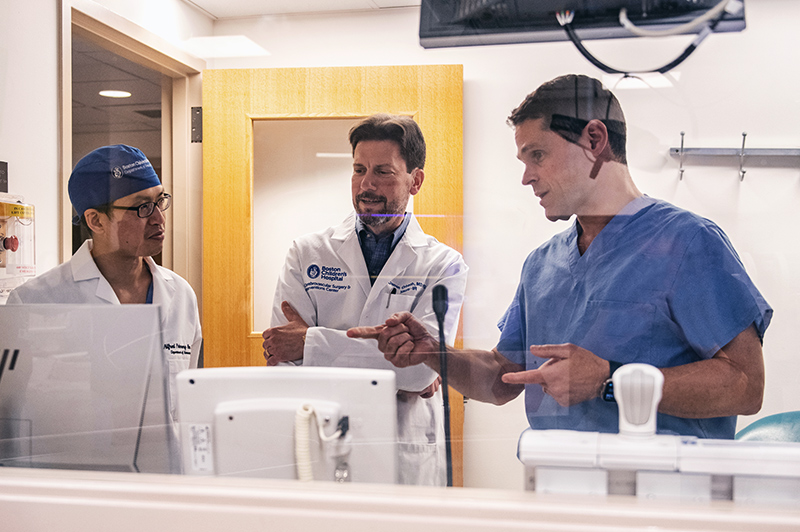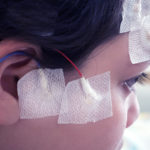Breaking new ground in cerebral cavernous malformation research

Children with cavernous malformations face unique treatment challenges due to factors such as the malformation’s location, size, risk of bleeding, and the complexities of pediatric tissue development. To address these issues effectively, advanced diagnostics and precise interventions are essential. This is why Ed Smith, MD, and the team at the Cerebrovascular Surgery and Interventions Center (CSIC) at Boston Children’s Hospital are developing comprehensive guidelines for managing these abnormal blood vessel clusters in the brain and spinal cord and participating in global organizations that support research and expanding access to care. Building on those cornerstones, the center is enhancing the understanding, diagnosis, and treatment of cavernous malformations through its own pioneering research.
“Through more comprehensive understanding,” says Smith, “we can dramatically improve care through targeted genetic testing and personalized care strategies, which will ultimately lead to better patient outcomes.”
New insight into pathology
Smith and the CSIC team’s latest research focuses on understanding the genetic and pathological foundations of cerebral cavernous malformations (CCMs). Their work investigates specific pathological features, such as defective tight junctions and a lack of smooth muscle, and genetic markers such as mutations in CCM1, CCM2, or CCM3 for familial cases, and the “two-hit” mechanism of MAP3K3, RASA1, and EPHB4 mutations in patients who develop sporadic cases of CCMs without a clear family history, with two mutations occurring independently.
This insight enhances diagnostic accuracy for CCMs by understanding their genetic and pathological foundations. This knowledge can inform treatment options and foster interdisciplinary collaboration, ultimately improving patient management and outcomes.
Studying signal pathways

The Cerebrovascular Surgery and Interventions Center not only helped Hudson but also revealed a possible hereditary link to his cavernous malformations. Read his family’s story >>
Recent advances in DNA and RNA sequencing have enhanced the understanding of the genetic regulation of cerebrovascular diseases. CSIC researchers have discovered that disturbances to Ephrin B2 and EphB4 signaling pathways — essential for blood vessel formation in the brain — are linked to various vascular malformations. Specifically, their studies show that cells from patients with cerebral cavernous malformations (CCMs) move and grow differently than healthy cells and have an increased ratio of Ephrin B2 to EphB4 and mutations in both proteins. These findings suggest that disruptions in Ephrin B2/EphB4 signaling might be a common factor across different vascular malformations, indicating they could be potential new targets for treatment.
A closer look at genetics
The team is also exploring the genetic foundations of familial cerebral cavernous malformations (FCCM). Their research finds that in addition to diagnosing FCCMs through clinical findings, imaging, and family history, genetic testing can identify pathogenic variants in genes such as KRIT1, CCM2, and PDCD10. This finding underscores the importance of genetic counseling as a way to gain critical insights into FCCMs’ nature, inheritance patterns, and implications. Such knowledge help clinicians make appropriate recommendations for genetic testing and surveillance and empowers families to make informed medical decisions and understand familial risks.
“Our goal,” says Smith, “is to ensure that patient care is informed by the latest research and tailored to individual needs.”
Learn more about the latest research and innovations in cerebrovascular care or refer a patient.
Related Posts :
-

All in it for Hudson: A family’s shared path with cavernous malformations
Three-year-old Hudson loves trucks and PAW Patrol. He’s a delightful blend of sweet, fun, and feisty, and — after a ...
-

Defying the odds: Cruise’s triumph against cavernous malformations and debilitating headaches
As a toddler, Cruise — now 13 — faced a rare cancer diagnosis that came with an 11 percent chance of survival. But with ...
-

A path forward for genetic testing in unexplained epilepsy
The number of genes implicated in epilepsy has grown rapidly in the past decade. This raises questions about what tests ...
-

Optimal care, lower costs: Examining the benefits of out-of-network care for pediatric moyamoya
Moyamoya disease is a rare condition that affects the blood vessels in the brain, especially in children. Narrowing and blockage ...





